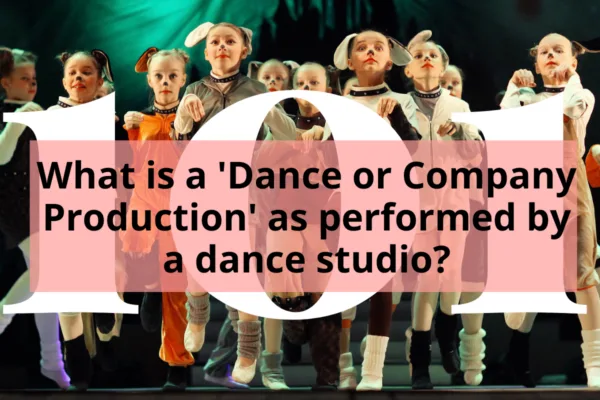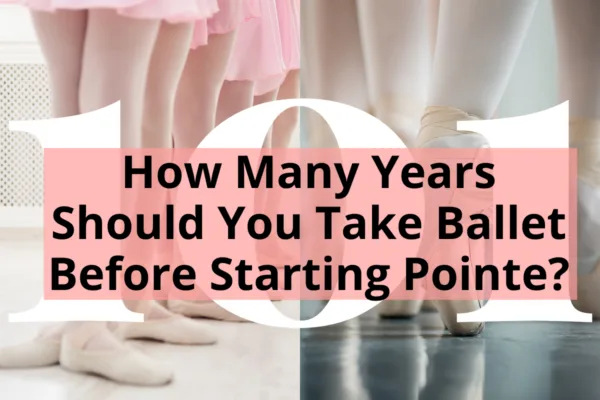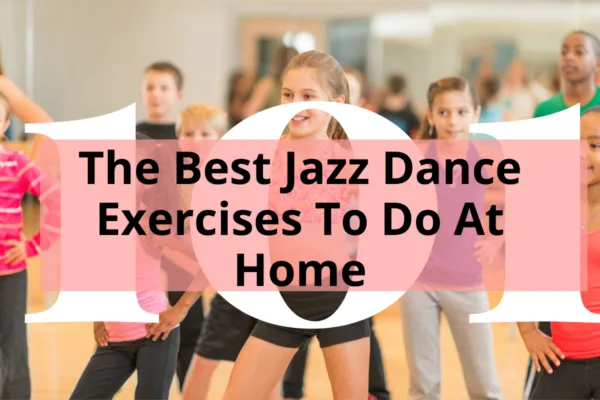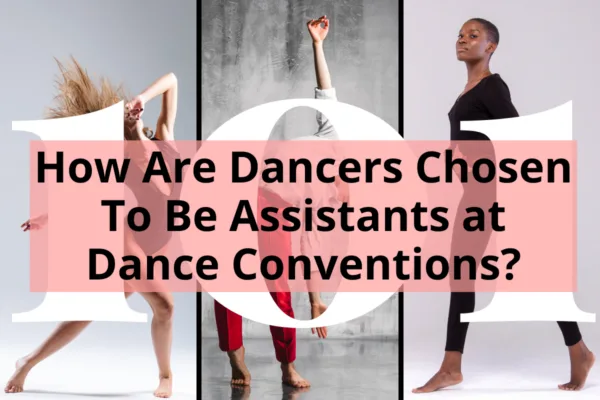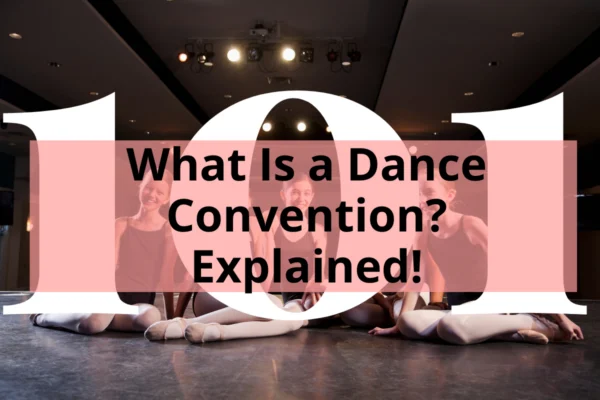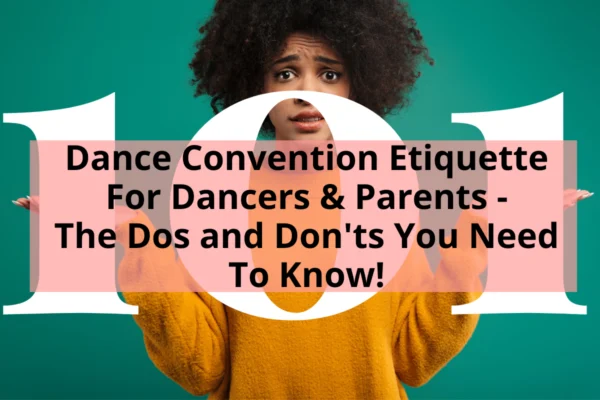By Lesley Mealor / Edited by Samantha Bellerose, B.Ed, Dip.Dance(Performing Arts)
Jazz dance is a favorite style of dance for many people around the world. Combining rhythmic movements, popular music, and dynamic energy, beginners often gravitate towards jazz class simply because it’s exciting! If your child is interested in starting dance classes, you may be wondering what to expect from a jazz class. What is a jazz class like? What should beginners be learning?
A beginner jazz class will last between 45 minutes to an hour and a half, and dancers should be learning some traditional jazz steps along with basic motor skills. For very young dancers, jazz may be offered alongside ballet or tap as a combo class.

Jazz dance has some unique qualities that make it a good choice for children looking for an after-school activity as well as kids who want to add to their existing dance training. This overview covers beginner-level jazz classes, which in the studio setting are likely to skip over the important history of the art form.
To fully understand jazz dance and why it became so popular today, you need to know about its roots. There are many resources online that give in-depth attention to the history of jazz, but for our quick overview, visit our article Jazz Dance History & Timeline – What You Need To Know!
- Why Choose Jazz Dance?
- How Old Does My Child Have To Be To Start Taking Jazz Dance?
- How is Jazz Class Different From Ballet Class?
- How is A Jazz Class Structured?
- What Steps Should My Child Be Learning in a Beginner Jazz Class?
- What Shoes Should My Child Wear to Jazz Class?
- What Clothing Should My Child Wear to Jazz Class?
- and more….
Why Choose Jazz Dance?
Jazz dance is historically and currently a very popular style of dance to study! From its roots in Africa, through its evolution during the jazz age of the early 20th century, to its use in movies, musicals, and music videos, to its codification into a style of dance you can study in studios and universities around the world, jazz dance provides countless benefits!
Jazz dance offers a range of benefits that are unique to this style. Studying jazz dance involves learning how to isolate body parts, move in both fluid and sharp ways, gain strength and flexibility, and appreciate a wide variety of music.
In many jazz classes, young dancers have the opportunity to get out a lot more energy than in a more slow-moving class like ballet. Jazz often allows for learning how to improvise, which kids love to do in order to express themselves.
If you’ve seen the popular tv shows “Dance Moms” and “So You Think You Can Dance”, you will find examples of advanced jazz dancers. Most beginner jazz classes won’t be up to that level of expectations, but these shows can give you an idea of what current jazz dance trends look like once the training gets more extensive. If your child idolizes any of those dance stars from tv, jazz class might be in your future!
How Old Does My Child Have To Be To Start Taking Jazz Dance?
Most dance studios will start true jazz classes for kids ages 7 and up. However, combination classes, or combo classes, may be offered as early as age 2.5, but keep in mind that with children that young, most of what they’re learning will be creative movement and gross motor skills rather than real jazz.
In case you are unfamiliar, a “combo class” refers to the kind of classes that are offered to the youngest dancers. Most young children have very short attention spans, and cannot focus for 45 minutes to an hour of one style of dance. A combo class will offer 30 minutes of ballet and 30 minutes of tap, for example, or a combo of ballet, tap and jazz for a total of an hour and a half.
For more information check out our article What is the best age to start dancing? – Real Answers for Parents!
How is Jazz Class Different From Ballet Class?

Jazz classes are structured similarly to ballet classes most of the time, but the main difference is that in most ballet classes, dancers begin at the barre for exercises like pliés and tendus.
In jazz classes, all kinds of music is used, but most often you will hear current popular music. A lot of dance teachers will use older music for kids’ jazz classes, because so much current pop music is inappropriate for children.
While some ballet teachers have started using instrumental pop music for class, the majority of the time, ballet classes will use strictly classical ballet music, which can sometimes be considered “boring” by new dancers. The kind of music used for jazz classes is often cited by kids as one reason they prefer jazz to ballet!
How is A Jazz Class Structured?
In most jazz classes, dancers begin standing in the center for warm ups, then move to stretching and strengthening on the floor, then across the floor for progressions (combinations of steps that move across the floor), and back to the center to learn a combination, usually consisting of steps they worked on across the floor.
Although beginner classes differ in duration, a typical jazz class for a 4-7 year old will be 45 minutes long. Dancers will spend 15 minutes warming up, 15 minutes working on progressions across the floor, and 15 minutes on a center combination.
Once dancers reach an intermediate level, or age 8 and up, jazz classes are lengthened to at least an hour, if not an hour and a half. You will see why jazz classes need to be this long when you understand what goes into each section!
Warm Up
In a jazz warm up, dancers will warm up all parts of the body, from isolating the head, shoulders, ribs and hips, to stretching and strengthening their muscles by doing pliés and tendus, similar to a ballet class. Dancers will also sit on the floor to stretch in splits, pikes, and other stretches, as well as work on core strengthening exercises like crunches and push ups.
As dancers progress pirouette preparation in the center may also be added to a warm up with students practicing balancing on the ball of one foot, ¼ turns, ½ turns, full turns which eventually lead into double and triple turns as they advance.
Across the Floor Progressions
When dancers talk about going across the floor, they are talking about practicing traveling steps from one side or corner of the room to the other. The term “progressions” can refer to any step that literally progresses across the floor, such as jazz walks, grapevines, turning sequences, Step kicks or leaps and jumps. Going across the floor includes traveling both side to side, as well as front to back, and from both sides of the room.
Center Combination or “Combo”
You might have heard dancers talk about learning a “combo”, which refers to a short routine in the center of the dance studio that may combine steps they’ve been working on during the class. Most dancers look forward to the combo section of class every week because it is often different each week, or builds upon itself each week.
Recital Dance
Additionally, if you are at a studio that has an end of year recital or concert, some of the class time will be spent working on the recital dance. You can see why class lengths get longer as dancers advance in their training – there is so much to get done in one class, and 45 minutes just isn’t much time!
What Steps Should My Child Be Learning in a Beginner Jazz Class?
In a beginner children’s jazz class, there are a number of traditional jazz steps that should be taught. Because jazz is ever-changing and evolving, there will be plenty of steps that are not covered here, but if you are watching during parent watch week, you should be able to pick these steps out, as they are some of the foundational steps in the jazz dance world.
- Chassé or Lindy
- Kick Ball Change
- Body Isolations
- Pas de Bourrée
- Jazz Square or Box Step
- Pivot Turn
- Grapevine
- Pirouette
Chassé or Lindy
The chassé is a traveling step that looks similar to a gallop. Chassés can travel front, side or back. When you add a ball change at the end of a side chassé, that’s called a lindy.
Kick Ball Change
A kick ball change involves kicking one foot forwards and rocking back on it while shifting weight. Kick ball changes can also travel.
Body Isolations
A key component of jazz dance is the use of isolations. Typical isolations involve the head, shoulders, chest, and hips, and can be done in all directions.
Pas de Bourrée
A recognizable jazz step, a pas de bourrée crosses back, steps to the side, and lands down. They can be done in place or traveling, and have many variations.
Jazz Square or Box Step
Another easily recognizable jazz step, the jazz square or box step crosses over, steps back, steps side, and steps front, making a box pattern with the feet.
Pivot Turn
A pivot turn uses one foot to step forward and push off, while the other foot stays in place and acts as an axis.
Grapevine
The grapevine is a traveling step that you may know from the world of line dancing, or from shows like “Soul Train”. There are many variations of the grapevine, but the standard pattern is side, back, side, touch together.
Pirouette
A jazz pirouette is the most advanced of the beginner jazz steps, and involves a quick rotation on one leg, while the other leg is held in a parallel passé.
What Shoes Should My Child Wear to Jazz Class?

Most dance studios will require jazz shoes for beginner jazz classes. Jazz shoes are made of soft leather or stretch canvas, with a rubber outsole for traction. You may choose between slip on or lace up styles.
Jazz shoes provide the necessary traction, flexibility and protection needed for the kinds of movements done in jazz class. If you need more help finding the perfect pair of jazz shoes for your child, check out our article on how to find the right jazz shoes!
What Clothing Should My Child Wear to Jazz Class?

In jazz class, just like ballet class, it’s important for teachers to be able to see dancers’ lines so they can help them execute the steps properly. For that reason, form fitting dance clothing is best for jazz class. Most studios will have some type of dress code, but generally, a leotard with fitted shorts or a fitted tank top or crop with leggings or jazz pants are good choices.
Avoid baggy t-shirts or loose fitting pants, as those types of clothing can hinder the teacher’s ability to see and make corrections.
Jazz classes are some of the most popular in dance studios all over the world, and with the information you learned here today, hopefully your dancer is more prepared to walk into their first jazz class with confidence!
FURTHER READING
Your Child’s First Year of Ballet & Dance Classes – QUICK GUIDE

